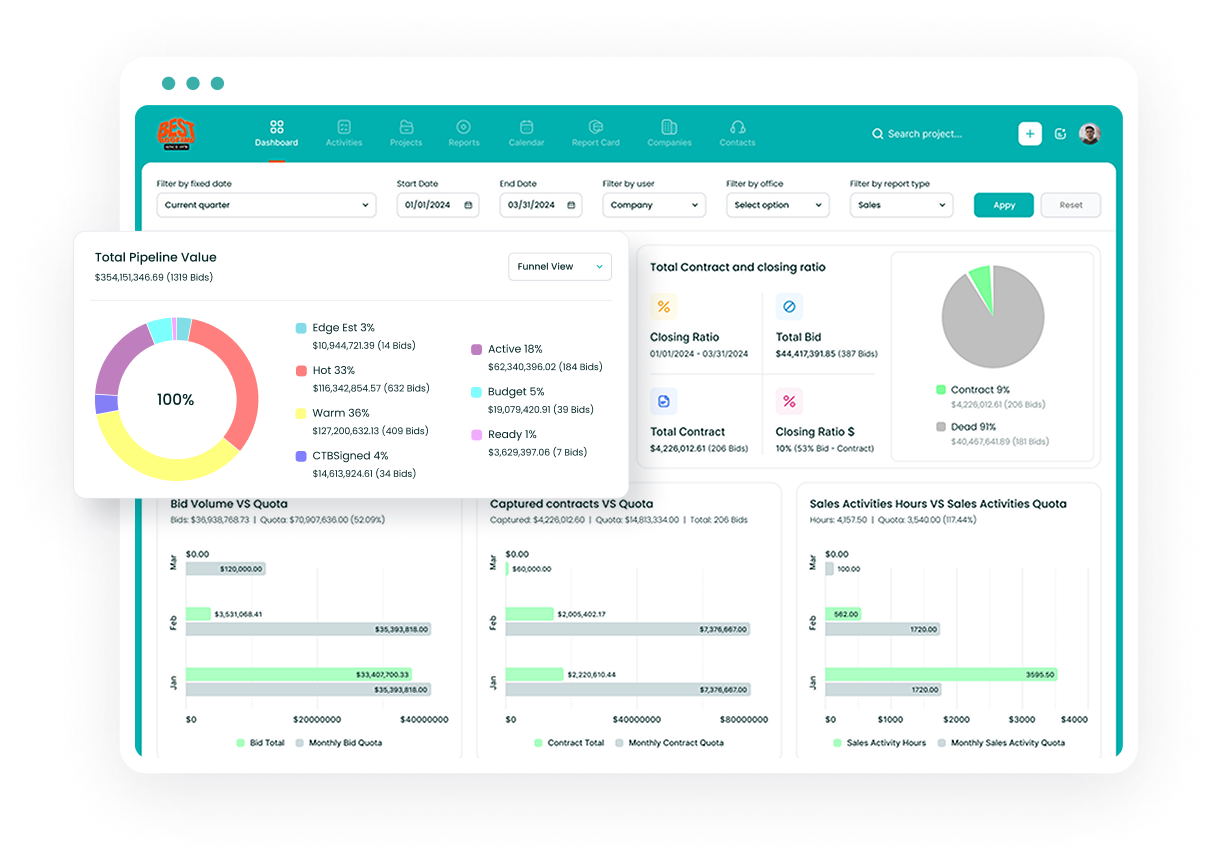Bluebeam vs Procore
The construction industry has witnessed significant technological advancements, with Bluebeam and Procore emerging as leading software solutions. These platforms have revolutionized how construction professionals handle projects, documents, and team collaboration. While both tools serve the construction industry, they offer distinct functionalities that cater to different aspects of project management and document handling.
Understanding the Core Differences Between Bluebeam and Procore
Bluebeam Revu specializes in PDF markup, editing, and collaboration tools specifically designed for architecture, engineering, and construction professionals. The software particularly excels in document management, drawing review, and quantity takeoffs, making it an indispensable tool for professionals who work extensively with construction documents and specifications.
Procore takes a broader approach by offering a comprehensive construction project management platform. The software encompasses various functionalities that extend beyond document management, including project scheduling, financial tracking, quality control, safety management, and field productivity monitoring. This wide-ranging functionality makes it particularly suitable for larger construction firms managing complex projects.
Advanced Document Management and Markup Capabilities
Document handling remains a crucial aspect of construction project management, and both platforms approach this need differently. Bluebeam Revu offers sophisticated PDF editing and markup capabilities that construction professionals find invaluable for detailed document work. The platform provides intuitive tools for annotation, custom stamping, and precise quantity takeoffs that streamline document-centric workflows.
Procore approaches document management from an organizational perspective, focusing on version control and file organization. While it handles various file formats effectively, including PDFs, its markup capabilities are more basic compared to Bluebeam's specialized tools. However, Procore excels in maintaining document hierarchies and ensuring all team members have access to the latest versions of project documents.
Comprehensive Project Management Features
Procore distinguishes itself through its extensive project management capabilities. The platform offers tools for:
- Real-time budget tracking and financial reporting
- Detailed scheduling and resource allocation
- Quality and safety inspection management
- Comprehensive RFI and submittal tracking
- Change order processing and documentation
The software creates a centralized hub for all project-related activities, enabling teams to maintain clear communication channels and track progress effectively. Project managers can oversee multiple aspects of construction projects simultaneously, from financial performance to on-site safety compliance.
While Bluebeam focuses primarily on document-centric workflows, it offers specialized project management features centered around document control and collaboration. Through its Studio feature, teams can manage document reviews, track markup history, and coordinate complex submittal processes. The platform excels in quantity takeoffs, measurements, and drawing comparisons, making it particularly valuable for estimating teams and document controllers who need precise tools for technical documentation management.
Mobile Accessibility and Field Operations
Modern construction management requires robust mobile capabilities, and both platforms have developed mobile solutions to meet this need. Procore's mobile application provides comprehensive access to project information, allowing field teams to:
- Update daily logs and progress reports directly from the construction site
- Document and report safety incidents or quality concerns immediately
- Access and modify project schedules and resource allocations in real-time
- Submit and review RFIs and change orders while on the move
- Capture and upload site photos with automatic organization and tagging
Bluebeam's mobile application focuses on document-centric functionalities, offering field teams the following capabilities:
- Navigate and access PDF files seamlessly through cloud storage integrations with Dropbox and Box
- Add markup comments, images, symbols, and multimedia using customizable tools
- Verify measurements for length, area, perimeter, radius, and volume directly in the field
- Embed multiple photos and videos into markups using the iPad camera
- Track all markup comments with author, date, and time stamps
- Collaborate in real-time through Studio Sessions even without internet access
User Experience and Learning Management
Both platforms prioritize user experience but approach it differently. Bluebeam's interface focuses on document handling efficiency, with tools and features organized logically for quick access. The learning curve varies depending on the user's experience with PDF software and construction documentation.
Procore's interface manages to organize its extensive feature set in an accessible manner, though new users often require dedicated training to navigate the platform effectively. Both companies offer comprehensive training resources, including video tutorials, documentation, and customer support channels.
Cost Considerations and ROI Analysis
Understanding the financial implications of implementing either software solution requires careful consideration of various factors. Bluebeam's transparent pricing model offers predictable costs through both subscription and perpetual licensing options. The tiered pricing structure allows organizations to select the feature set that best matches their needs while maintaining budget control.
Procore's custom pricing approach, based on annual construction volume, can initially seem less straightforward. However, this model often proves advantageous for organizations as it scales with their project portfolio. The platform's comprehensive feature set typically delivers strong return on investment through improved project efficiency and reduced administrative overhead.
Integration Capabilities and Software Ecosystem
The construction technology landscape requires seamless integration between various software tools. Procore maintains an extensive partnership network, offering integrations with:
- Enterprise resource planning systems
- Accounting software platforms
- Specialty construction applications
- Time tracking and payroll systems
- Document management solutions
Bluebeam focuses its integration efforts on CAD and BIM software, creating powerful connections that enhance document handling and design review processes. This specialized approach benefits firms that heavily rely on technical drawings and 3D modeling in their workflows.
Industry-Specific Applications and Use Cases
Construction professionals often find themselves choosing between these platforms based on their specific roles and project requirements. Architectural firms and engineering consultants frequently gravitate toward Bluebeam for its superior document markup and review capabilities. The software's precise measurement and takeoff tools prove invaluable during design development and construction documentation phases.
General contractors and construction management firms often prefer Procore's comprehensive approach to project management. The platform's ability to handle multiple projects simultaneously while maintaining detailed financial and progress tracking makes it particularly valuable for organizations managing large-scale construction initiatives.
Customization and Workflow Optimization
Customization capabilities play a vital role in adapting software solutions to specific organizational needs. Both Bluebeam and Procore offer extensive customization options that allow companies to tailor the platforms to their unique workflows. Teams can create custom tool sets, document templates, and automated processes that align with their established procedures.
The ability to create standardized workflows ensures consistency across projects and teams. Organizations can develop and implement standard operating procedures that reflect their best practices, leading to improved efficiency and reduced errors. These customized workflows become particularly valuable when onboarding new team members or scaling operations across multiple projects.
Training Resources and Professional Development
Professional development remains essential for maximizing the benefits of construction management software. Both platforms maintain comprehensive training programs that guide users from basic functionalities to advanced features. These educational resources include video tutorials, interactive workshops, and certification programs designed to enhance user proficiency.
Regular training sessions and workshops help teams stay current with new features and best practices. The construction industry continuously evolves, and staying proficient with these tools requires ongoing education and skill development. Organizations that invest in regular training often experience higher user adoption rates and better overall project outcomes.
Data Security and Compliance Management
When it comes to protecting valuable construction data, both Bluebeam and Procore take security seriously. These platforms understand that construction professionals need absolute confidence in their data protection, which is why they've built robust security systems that meet the highest international standards from ISO 27001:2013 certification to SOC 2 compliance.
Both platforms maintain multiple data centers with backup systems that keep your data safe and accessible whenever you need it. They use advanced security measures that construction professionals can count on, including top-tier AES-256 encryption for stored files and TLS 1.2 encryption when sending data. What's particularly helpful is how both platforms keep detailed records of who accessed what and when, giving project managers complete visibility into their information's security.
Essential Factors for Choosing Construction Project Management Software
The selection of construction management software represents a significant investment that shapes how teams collaborate, manage documents, and deliver projects. Modern construction firms must evaluate several critical factors to ensure their chosen platform meets both immediate operational needs and future growth requirements.
A successful software implementation starts with thorough preparation and stakeholder engagement. Organizations need to assess their existing processes, identify operational bottlenecks, and define clear objectives before selecting a solution. Key considerations include user-friendliness, mobile accessibility, integration capabilities with existing tools, and the level of customer support provided by the vendor.
The implementation process requires careful planning and a phased approach to minimize disruption. Teams should focus on comprehensive training programs, establish clear communication channels, and create standardized workflows that align with their organization's best practices. Regular monitoring and feedback collection help ensure the software continues to meet evolving project demands while maintaining high user adoption rates.
Sources: [1] https://www.bluebeam.com/pricing/ [2] https://www.softwareadvice.com/punch-list/bluebeam-revu-profile/vs/procore/ [3] https://www.itqlick.com/compare/procore/bluebeam-revu [4] https://www.jibble.io/construction-software-reviews/procore [5] https://www.selecthub.com/p/construction-management-software/procore/ [6] https://www.procore.com/pricing [7] https://www3.technologyevaluation.com/solutions/61363/bluebeam [8] https://www.selecthub.com/p/construction-management-software/bluebeam-revu/
The CRM Built For Construction Companies
No more disorganized data. Track your leads, bids, and customers all in one place.
Seamless Integration with:
✅ Foundation ✅ Viewpoint ✅ Sage and more

Request a Live Demo Now
Learn more about how Followup CRM can help your construction company grow.







